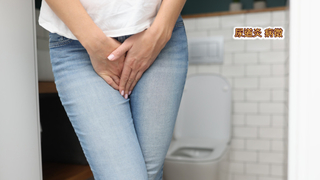July 19, 2021

Urinary tract infection is medically called urinary tract infection (UTI), also commonly known as urinary tract infection. Urine is composed of kidney, ureter, bladder and urethra. The upper urinary tract is the kidney, and the lower urinary tract is the bladder and urethra. No matter which part of the urinary tract is infected, it will cause urinary discomfort.
Men and women have different infection rates due to different urinary tract structures. The distance from the urethral orifice to the bladder is about 18-20 cm in men, and only 3 cm in women. In addition, å°¿é“ç‚Ž ç—…å¾µthe urethral orifice of women is quite close to the vagina and anus, so it is easy to clean the vagina or anus after going to the toilet improperly or through sex. Nearby bacteria are brought into the urethra. Therefore, compared with men, women are more likely to develop urinary tract infections.
What are the symptoms of urinary tract infections?
In the case of lower urinary tract infection, women usually refer to cystitis and urethritis, and men usually refer to prostatitis; upper urinary tract infection is called pyelonephritis. Symptoms vary depending on the location of the infection. Frequent urination, blood in the urine, burning sensation and pain during urination are common symptoms of urinary tract infections. In addition to the same symptoms as urinary tract infections, urinary tract infections may cause fever, abdominal pain, nausea, and vomiting. Clinical statistics show that nearly a quarter of women have suffered at least one urinary tract infection in their lifetime, and some of them have even relapsed.
The cause of urinary tract infection?
The causes of urinary tract infections are as follows:
Insufficient drinking water: Drinking water will directly affect the frequency of urination, while drinking too little water will increase the time for bacteria to stay in the bladder or urethra, and then multiply and eventually cause infection.
Holding urine for a long time: some people engaged in specific tasks (such as chip operators, etc.).
Sexual behavior: In the process of sexual behavior, it is easy to bring bacteria in the vagina and anus into the urethra, and then infection.
Bad hygiene: After urinating, women should wipe from front to back, that is, from the vagina to the anus. When wiping in the opposite direction, it is easy to put bacteria in the tube and anus into the urethra and cause infection.
Decreased female hormones: When women reach menopause, due to the decrease of female hormones, the mucous membrane is dry and fragile, which makes bacteria easy to grow and increases the possibility of urinary tract infection.
What should I do with urinary tract infections?
Common pathogens that cause urinary tract infections (both upper urinary tract and lower urinary tract are possible) are Escherichia coli and Enterococcus. Antibiotics are usually used in medical treatment. However, excessive use of antibiotics can also destroy the flora of the gastrointestinal tract, thereby reducing human immunity. Therefore, in order to avoid urinary tract infection, the following measures can significantly reduce the risk of infection:
Drink enough water of 1500 ~ 2000 C.C. every day.
Urinate regularly and clean thoroughly after going to the toilet (wipe clean from front to back).
Avoid wearing tight pants to avoid poor ventilation and bacterial growth.
pay attention to the cleanliness of both parties before sex, and drink plenty of water after sex to increase urination.
Eat specific healthy foods to prevent urinary tract infections.
related articles:7 kinds of fruits that are good for recovery from inflammation
Urinary tract infections are common in women and men
Posted by: DEXTRADh at
09:25 AM
| No Comments
| Add Comment
Post contains 601 words, total size 5 kb.
35 queries taking 0.0429 seconds, 69 records returned.
Powered by Minx 1.1.6c-pink.









